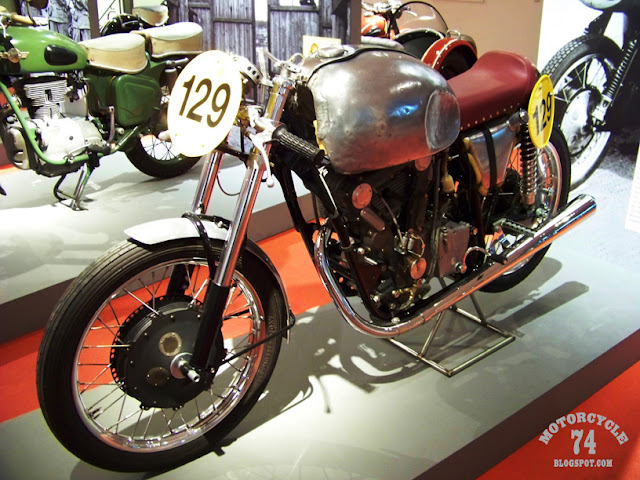The AWO motorcycles, which were manufactured in Suhl, Thuringia, are still cult, especially the famous Simson 425 S. Although the four-stroke engines of the 1950s were very popular in the former GDR, after only 10 years of production, the GDR authorities banned further production in favour of the “bird” series mopeds and MZ two-stroke engines. However, it seems that “those condemned to die live longer” as AWO motorcycles had their comeback 20 years later; and it was the cult following that gave the initial spark for our special exhibition. It focuses on the history of the Suhl-based AWO company and its entire type range from the AWO 425 T (touring) and AWO 425 S (sport) to combinations; racing, quad and Stayer motorcycles; and motorcycles for special use. The exhibition is enhanced by the many AWO stories sent to us, telling visitors about the joy and sorrow of bikers in the 50s and 60s.
The AWO was built at the former Simson works (located in Suhl) known mainly for its 150 years of manufacturing hunting and sporting weapons. Since 1896 the product line also included bicycles, cars and motorcycles. In 1945, the company was taken over by the Soviet Military Administration; and in 1947 alone, 36,000 bicycles and 20,000 hunting weapons were sent to the Soviet Union as war reparations. Then, in 1948, the Suhl-based bicycle factory of the Soviet Awtowelo Co. was ordered to develop a new motorcycle. At a time when Germany still lay in ruins, dedicated design engineers accepted and successfully met this great challenge. The touring AWO 425 motorcycle was the favourite when presented at the 1950 Leipzig Spring Fair for the first time. At the end of the year, the 1000th engine left the company, which was later renamed Fahrzeug- und Gerätewerk Suhl (IFA). By 1961, when the company was closed down, about 200,000 AWO motorcycles had rolled off the assembly line.
Awo info in German:
wikipedia.org AWO 425 wikipedia.org AWO 700
Awo info in Dutch: wikipedia.org











No comments:
Post a Comment